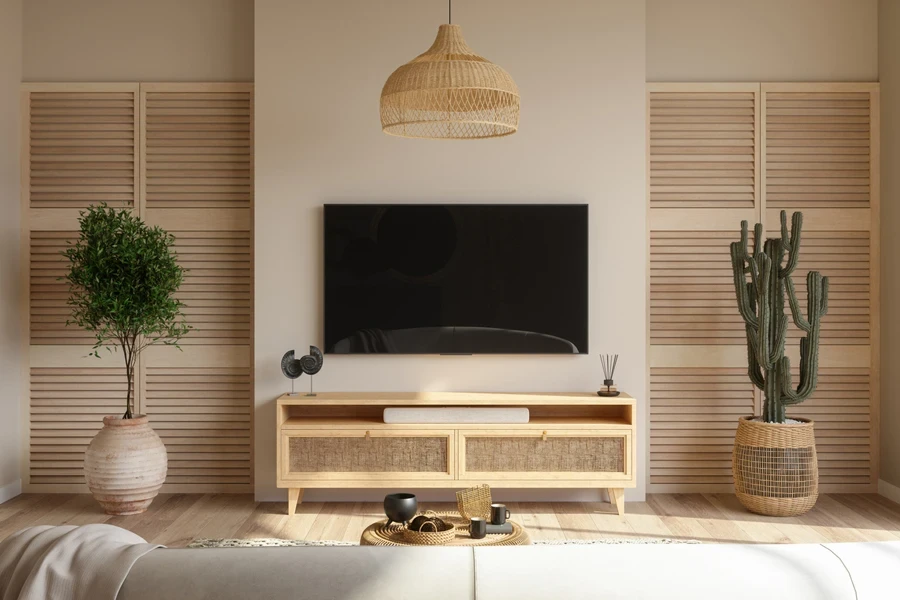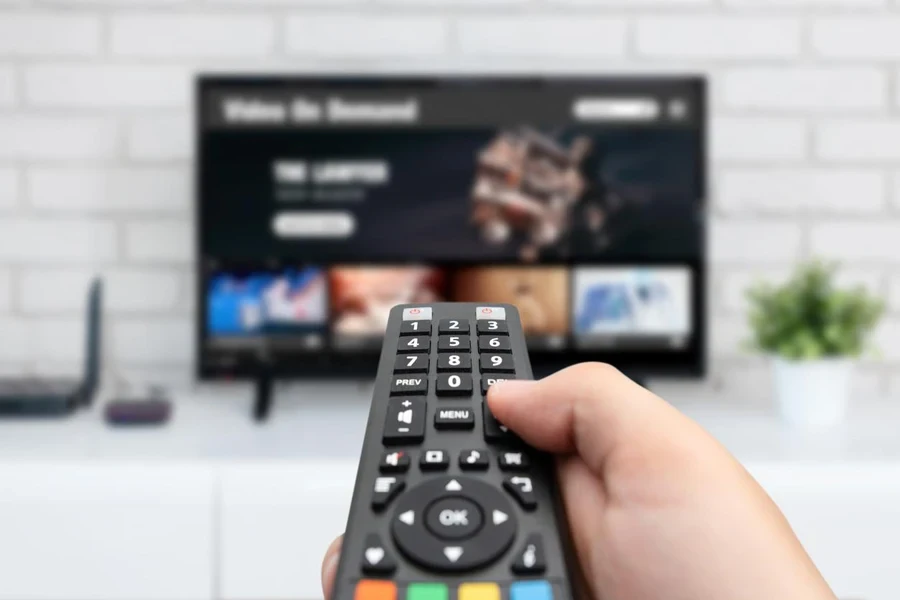As television technology advances, it introduces features that enhance viewing experiences, such as higher resolutions and smarter connectivity. These innovations cater to rising user expectations and offer unique opportunities for those managing product selections in online marketplaces. Understanding the latest TV technologies and their capabilities is crucial, as it influences customer satisfaction and engagement, ensuring a competitive edge in the rapidly evolving electronics sector.
Table of Contents
1. Exploring TV technologies: from LED to QLED
2. Capturing the 2024 TV market: trends and preferences
3. Criteria for the perfect TV: what to look for
4. Showcase of champions: best TV models for 2024
Exploring TV technologies: from LED to QLED

A spectrum of displays: understanding the basics. The landscape of television display technology has grown significantly diverse, with LED, OLED, and QLED at the forefront of consumer choices. LED (Light Emitting Diode) TVs utilize a backlight to illuminate the display, offering good color reproduction and brightness at an affordable cost. OLED (Organic Light Emitting Diode) screens go a step further by enabling each pixel to emit its own light, allowing for deeper blacks and higher contrast ratios. QLED (Quantum Dot LED) TVs, pioneered by major brands like Samsung, enhance this technology by using quantum dots to improve the vibrancy and color range. This trifecta of technologies represents the spectrum of available displays, each with unique advantages and suited to different viewing needs.
Tailoring technology to application: The choice between LED, OLED, and QLED depends significantly on the intended application and viewing environment. For brightly lit rooms, QLED TVs are often preferable due to their ability to produce more luminous displays that combat glare effectively. In contrast, OLED TVs are better suited for darker settings, where their superior contrast ratios and ability to display true black can be fully appreciated. Retail platforms that tailor their product offerings based on these criteria will meet diverse consumer needs more effectively. Understanding the nuances of each technology allows for better recommendations and more satisfied customers, who will benefit from a viewing experience that matches their environment and viewing habits.
This detailed understanding of television technologies not only aids in selecting the appropriate product but also positions online platforms as knowledgeable sources in a competitive market. With the rapid evolution of TV technology, staying informed about the latest advancements and their practical applications becomes a significant advantage.
Capturing the 2024 TV market: trends and preferences

Pioneering trends: smart TVs and beyond. Experts currently value the global television market at approximately USD 259.16 billion. They anticipate this market will continue to expand, reaching a projected value by 2028 at a compound annual growth rate (CAGR) of 10.0% from 2022 to 2028. This projected growth underscores a robust demand and potential for further development across the television industry worldwide. As the TV industry marches into 2024, a clear trend towards the integration of smart functionalities and a shift towards 8K resolution are significantly shaping consumer demand. Smart TVs are no longer just about streaming; they now integrate deeper with home automation and offer advanced interfaces for interaction with multiple devices, enhancing user convenience and expanding their appeal. Moreover, the advancement towards 8K resolution, despite the current content limitations, signals a push towards ultra-high-definition displays, anticipating future content evolution. These technological advancements are setting new standards in the industry, influencing expectations and setting the pace for future innovations.
Consumer pulse: preferences and demands. The preferences and demands of TV consumers are evolving, driven by technological innovations and enhanced performance expectations. Data insights indicate a significant interest in larger screen sizes, which align with the trends towards higher resolution and better-quality image detail. Features such as high dynamic range (HDR) and wider color gamuts are becoming standard expectations rather than premium add-ons. Additionally, connectivity features like HDMI 2.1 are now critical, given their ability to support higher video resolutions, faster refresh rates, and enhanced audio return channels, crucial for next-generation gaming and high-definition content streaming. This alignment between consumer preferences and technological capabilities is guiding the strategic decisions of industry players, aiming to meet and anticipate the needs of a discerning customer base.
These insights into the 2024 TV market underline the critical importance of staying ahead in a rapidly evolving industry. By understanding and responding to these trends and consumer preferences, companies can better position themselves in a competitive market, ensuring they meet the sophisticated demands of modern consumers.
Criteria for the perfect TV: what to look for

The big picture: screen size and resolution. When selecting a television, the correlation between screen size, resolution, and viewing distance is pivotal. For a TV with a 4K resolution, the general guideline suggests a viewer can sit closer—approximately 1.5 times the screen height—without noticing pixelation. For instance, for optimal viewing of a 65-inch 4K TV, the distance should be around 8 feet. This proximity allows viewers to appreciate the detailed clarity and vibrant colors without strain. As screen resolutions have improved, from HD to Ultra HD and 4K, smaller details become visible even at closer distances, enhancing the immersive viewing experience.
The connective edge: ports and possibilities. Modern televisions are more than just display devices; their ability to connect with multiple platforms and technologies is crucial. HDMI 2.1 is becoming the standard for future-proofing your entertainment setup, especially for those interested in gaming or using the latest streaming devices. HDMI 2.1 supports higher bandwidth, which is essential for transmitting 4K and 8K content at 120 Hz, providing smoother playback and real-time interactive experiences. Additionally, for a setup that includes sound systems, streaming devices, and gaming consoles, a minimum of four HDMI ports is recommended to accommodate all hardware without needing constant reconfiguration.
Advanced connectivity extends to internet services, integrating smart TV capabilities with access to streaming platforms such as Netflix and YouTube in 4K resolutions. The inclusion of Ethernet ports along with enhanced Wi-Fi capabilities ensures stable and fast internet connections, crucial for streaming high-definition content without buffering.
These specifications are not just technical requirements but translate into tangible benefits for users, such as higher image quality, flexibility in connecting multiple devices, and a better overall media consumption experience. By emphasizing these features, televisions can cater to the diverse needs of modern home entertainment systems, ensuring compatibility and future readiness.
Showcase of champions: best TV models for 2024

Elite selection: top models from leading brands. The 2024 television market showcases remarkable models that set benchmarks in both technology and design. Among these, the TCL QM8 series stands out for its integration of mini-LED technology and full-array local dimming, which together produce an exceptionally bright and high-contrast display. This model is particularly noted for its affordability and features tailored for advanced gaming, supporting 4K at 120Hz input and variable refresh rates, making it an ideal choice for the latest gaming consoles like PS5 and Xbox Series X.
Samsung’s QN90B, another top contender, leverages its QLED technology augmented with mini-LED to achieve brighter images than OLEDs can, while maintaining superb contrast levels. This model is known for its deep blacks and vibrant color display, which comes close to the OLED experience but at a higher brightness level.
LG’s OLED G3 offers an unparalleled viewing experience with its new MLA (Micro Lens Array) technology, enhancing brightness levels significantly compared to its predecessors. This model stands out for its ability to perform exceptionally well in both brightly lit and dark environments due to its advanced anti-reflective screen and superior color accuracy.
Sony’s A95K QD-OLED merges the best of Quantum Dot and OLED technologies, offering stunning visual quality with more natural colors and deeper blacks. This model is particularly praised for its innovative One Connect box, which simplifies connectivity by housing all ports in a separate unit, connected by a single cable.
Hisense’s U8K series provides an excellent alternative for those seeking quality at a more accessible price point. It offers comparable features to more expensive models, such as mini-LED backlighting and full-array local dimming, but at a lower cost, making high-quality visuals more attainable for a broader audience.
Balancing act: performance versus price. These models demonstrate a strategic balance in performance and cost, meeting diverse consumer needs from casual viewing to high-end home cinema experiences. The TCL QM8, for example, while being one of the most affordable in the high-end bracket, does not compromise on features essential for a modern home theater. Conversely, the LG G3 and Sony A95K represent higher investment thresholds but justify their prices with unmatched visual quality and cutting-edge technology.
Each of these models has been designed with specific user needs in mind, from the avid gamer needing fast refresh rates to the cinephile craving perfect blacks and immersive colors. By prioritizing both innovation in display technology and thoughtful design, these televisions not only enhance the viewing experience but also represent the forefront of what is technologically possible in home entertainment.

Conclusion
As the television market continues to evolve, the focus for digital retailers in 2024 should be on offering a range of models that cater to both high-end consumers and budget-conscious audiences. From the advanced OLED and QLED technologies of the LG C3 and Samsung QN90B to the excellent value presented by TCL’s QM8 and Hisense U8K, ensuring a selection that balances technology, size, and price will be key. This strategy will not only satisfy diverse customer preferences but also enhance the competitive edge of retailers in a dynamic market.





 বাংলা
বাংলা Nederlands
Nederlands English
English Français
Français Deutsch
Deutsch हिन्दी
हिन्दी Bahasa Indonesia
Bahasa Indonesia Italiano
Italiano 日本語
日本語 한국어
한국어 Bahasa Melayu
Bahasa Melayu മലയാളം
മലയാളം پښتو
پښتو فارسی
فارسی Polski
Polski Português
Português Русский
Русский Español
Español Kiswahili
Kiswahili ไทย
ไทย Türkçe
Türkçe اردو
اردو Tiếng Việt
Tiếng Việt isiXhosa
isiXhosa Zulu
Zulu